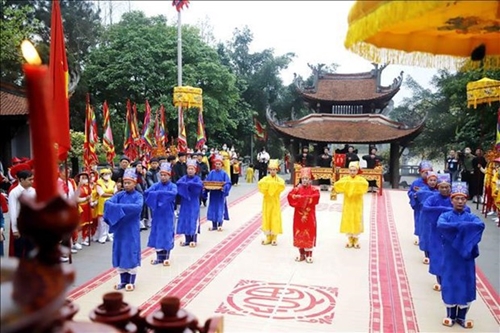Traditional rituals will be conducted at the temples dedicated to Lac Long Quan and Au Co in the Hung Kings Temple relic site to express gratitude to the ones who laid the foundation of the country, and incense and flower offering to Hung Kings in various localities.
A highlight of the 10-day ceremony is the opening of the Hung Kings Temple Festival and the Week of UNESCO-listed intangible cultural heritage to be held at Hung Vuong square in Viet Tri city on April 4 (the first day of the third lunar month)
    |
 |
|
Cultural activities planned for Hung Kings’ anniversary 2024 |
Other activities include exhibitions on Vietnam’s tourism, culture, heritages and sustainable development; a “Viet Tri Live music” street music program; the northwestern region's tourism fair 2024; the Hung Vuong Cup volleyball tournament; an one commune-one product (OCOP) trade exhibition; a cuisine festival; xoan singing; and firework displays.
Legend has it that Lac Long Quan (real name Sung Lam, son of Kinh Duong Vuong and Than Long Nu) married Au Co (the fairy daughter of De Lai). Au Co then gave birth to a pouch filled with 100 eggs, which later hatched into a hundred sons. However, soon thereafter, the couple separated. Lac Long Quan went to the coast with 50 of the children, while Au Co went to the highlands with the rest.
Their eldest son was made king, who named the country Van Lang and set up the capital in Phong Chau (modern-day Viet Tri city in Phu Tho province), beginning the 18 generations of the Hung Kings.
The kings chose Nghia Linh Mountain, the highest in the region, to perform rituals devoted to rice and sun deities to pray for healthy crops.
To honor their great contributions, a complex of temples dedicated to them was built on the mountain, and the 10th day of the third lunar month, which falls on April 29 this year, serves as the national commemorative anniversary for the kings.
The worship of the Hung Kings, closely related to the ancestral worship traditions of most Vietnamese families, was recognized as part of the Intangible Cultural Heritage of Humanity by UNESCO in 2012.
Source: VNA